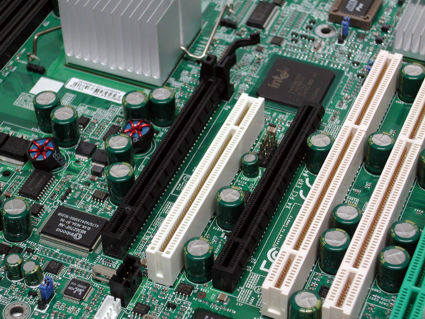Intel's Xeon Shows Its Stuff in 7 Motherboards
Demand Based Switching
Within the test bed, only the Intel motherboard was able to cope with Demand Based Switching. This feature allows for the Xeon processor to reduce the clock speed to a minimum of 2.8 GHz in order to decrease the thermal loss and power consumption. Only if performance is required, the processor will return to its provided clock speed.
DBS is only available for the 3.4 and 3.6 GHz versions of the Xeon processor, while the statements we received are ambiguous: According to Intel, D0 stepping Xeons should be ready for DBS, while Asus refers to the E0 stepping.
Defining the particular processor load at which the clock speed will be decreased/increased is left to the motherboard manufacturers. They provide these target conditions in the ACPI table.
SLI Is Possible!
The Supermicro motherboard offer a x16 and a x4 PCIe interface, while both of them mechanically use x16 connectors in order to allow for running NVIDIA SLI graphics solutions.
PCIe Vs. PCI-X
The introduction of PCI Express automatically lead to increased overall I/O performance on corresponding Xeon motherboards, as the chipset components are now communicating via PCI Express, too. Even the network interfaces are being transitioned to PCI Express now.
However, parallel PCI-X is not yet to be abandoned since almost all professional components available are based on PCI-X and won't be transitioned to PCI Express over night. Hence Intel decided to offer an adequate PCI-X bridge, called the 6700PXH.
Get Tom's Hardware's best news and in-depth reviews, straight to your inbox.
Current page: Demand Based Switching
Prev Page DDR2 Support With E7525 Next Page Asus NCT-D (E7525) - It's Overkill, But It's Fast
Patrick Schmid was the editor-in-chief for Tom's Hardware from 2005 to 2006. He wrote numerous articles on a wide range of hardware topics, including storage, CPUs, and system builds.
